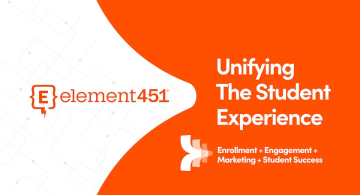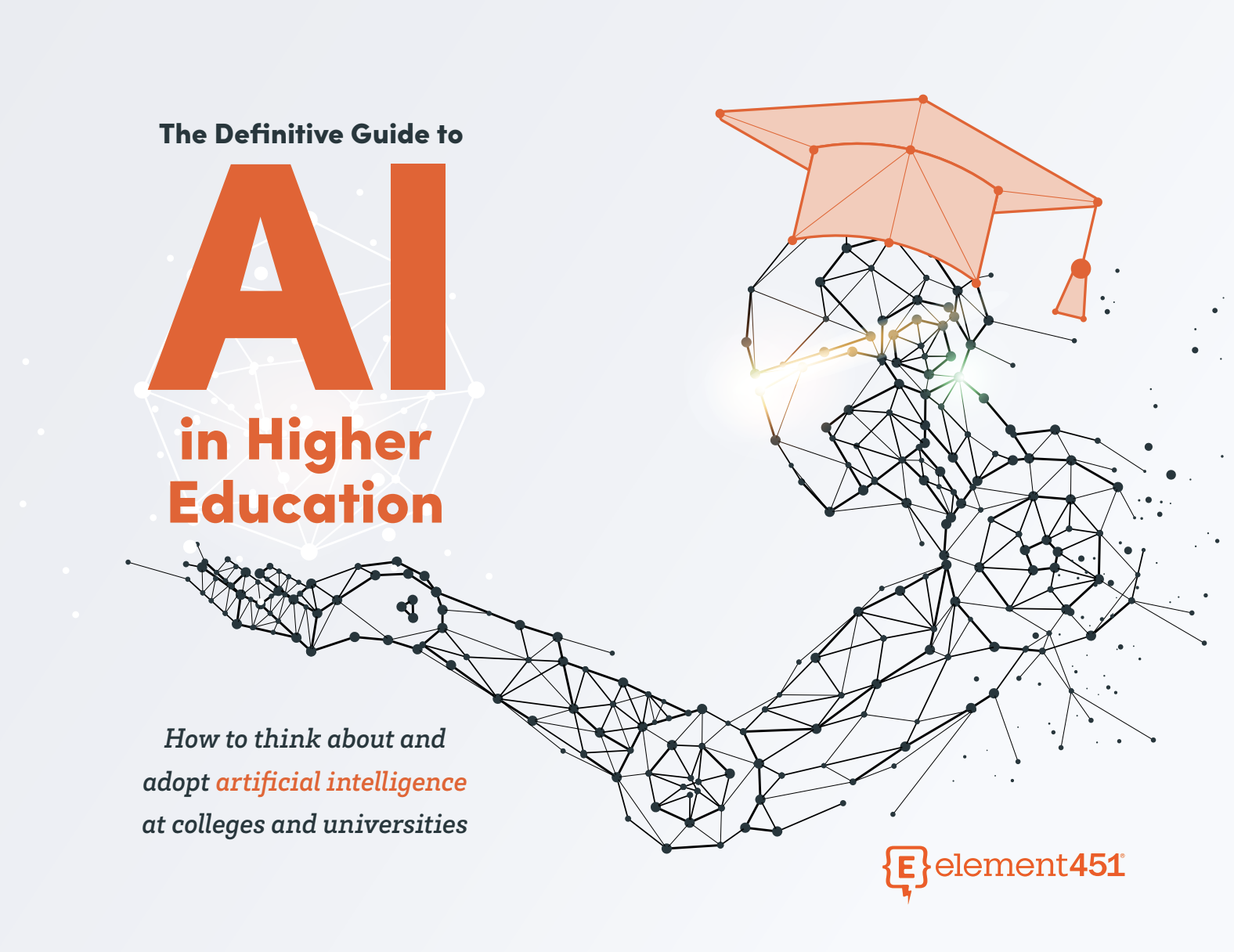Higher Education Marketing – Do’s and Don'ts for Campaign Success
by Sirley Carballo · Updated Sep 22, 2022
In the past, college recruitment efforts focused on traditional paper mailers, college enrollment fairs, and in-person networking or referrals. Yet in the digital age, having an online marketing presence is absolutely critical for recruiting new students and producing enticing messages to an incoming student body.

What steps are necessary to achieve success in your university marketing and brand stories? How can your admissions team overcome obstacles (such as declining enrollment numbers) while still producing effective marketing messages that appeal to contemporary students?
In this post, we’ll share everything you need to know about higher ed marketing, including what actions to take and which ones to avoid to generate the best results for your school’s campus community.
What is higher education marketing?
Higher education marketing refers to the creation of targeted marketing messages and assets that are intended to attract, recruit, and enroll new students.
Even though traditional marketing tactics still have their rightful place (consider print advertisements, billboards, and brochures) colleges and universities must now turn to digital channels and platforms to accomplish a different set of goals.
To generate a greater rate of return, new digital marketing efforts should focus on the student journey. Personalized student experiences can transform basic marketing content into the kind of messages that encourage action and response.
Why is marketing important for higher education institutions?
Marketing is critical for higher education institutions that want to survive and thrive in an incredibly competitive and complex market. The field is undeniably crowded when it comes to the available options that students have for pursuing a degree.
According to data from Best Colleges, there are nearly 6,000 higher ed institutions within the United States alone. Although this number includes small technical training schools to Ivy League universities, the truth is clear—students have plenty of options when it comes to choosing what’s best for their unique education, and higher ed marketers must keep this in mind.
By creating more relevant marketing strategies and campaigns, admissions and marketing professionals can help ensure that their school is visible, attractive, and focused on the next chapter of enrollment growth.
Do’s – Tips to follow for marketing success
Whether you’re building your marketing efforts from the ground up, or you’re reinventing your strategies in response to current marketing trends, there are specific actions you can take to maximize success.
The list below includes some of our favorite tips or “must do” action items that your team can use right away to start seeing results.
Do identify your target audience and ideal persona
It’s nearly impossible to achieve and create personalized experiences if you’re unsure about your target audience. The more information you have about your ideal student, the easier it is to craft messages that appeal directly to their pain points, goals, and expectations.
If you’re not sure where to start, you can use the following outlets to research your target audience and learn more about which campaigns strike a chord.
- Demographic data from your current enrollments
- Historical data about students from your university CRM platform
- Analytics from social media platforms
- Anecdotal data from in-person interactions with students and families
To truly leverage this information to your advantage, try crafting an ideal student persona for your university.
A persona is a fictional (yet accurate) profile of the student you most want to reach or attract with your marketing strategy. This profile should be incredibly specific, detailed, and thorough so that you can set goals that cater to them.
Do analyze and keep track of what’s working
For the best chance at powerful marketing campaigns, you must keep track of what’s working and what isn’t. As a marketing or admissions professional, one of your biggest priorities should be analyzing the performance of new campaigns.
As you gather and review relevant data, remember the key performance indicators (KPIs) or metrics that your team has already established. Examples of KPIs in a higher ed context might include:
- Number of conversions on web contact or “Request for Information” forms
- Number of clicks on social media or digital advertisements
- Quantity and quality of social media engagement
- Number of new student enrollments (year-over-year)
When you understand which marketing efforts are most effective (keeping your ideal persona in mind), you can better report results to stakeholders, decision-makers, and marketing leadership.
Do optimize all content according to SEO best practices
Modern student recruitment depends on the creation of strategic digital content that has a high lifetime value. This is information that prospective students, parents, and community members access online while in the research phase.
To improve the performance of these pieces of content or web pages, invest in search engine optimization (SEO) resources and best practices. When you optimize marketing for SEO, you can improve your school’s appearance on search engine results pages like Google.
If your school attracts a significant number of local or in-state students, this step is particularly important. When you enhance the SEO features of your marketing materials, you become more visible to students who are eager and ready to find more information about local institutions.
Don’ts – What to avoid if you want to build better campaigns
As you construct marketing messages and high quality content that hits home with future students, there are a few actions to avoid.
If your past marketing efforts included some of the following mistakes–don’t worry.
Digital marketing moves at such a rapid pace that there’s always time to establish new standards, goals, and milestones.
Don’t make your marketing efforts all about the school
For example, if you want to personalize your marketing campaigns to attract incoming students, don’t focus only on what your institution offers. Instead, help students visualize their own academic journey and access to available resources.
There are several ways you can accomplish this while still educating students about your university’s offerings.
For example, get current students involved in marketing messages and invite them to tell their stories. This effort can make your marketing seem relatable, intentional, and relevant.
Don’t focus solely on traditional media outlets
Schools with high-performing marketing campaigns and excellent brand standards understand the importance of diversification. When it comes to digital content, this means that you must think outside the box with the channels and platforms you use.
To create success, go beyond the traditional outlets like print materials and email. Instead, funnel your energy into the platforms where students are spending the most time. This might include social media platforms, especially those that feature video. You may also experiment with options like:
- Blog posts
- In-person events
- Real student stories
- Pay per click (PPC) campaigns
- Online portals exclusive for accepted or enrolled students
Don’t miss out on entertainment and fun
Throughout the creative process, have fun and connect with audiences on a personal level. Many universities expect to draw students in with academic programs, but there's more to the university story than academic departments.
Prospective college students are energetic and excited about the future, and ultimately, your content must support this energy in order to be compelling.
In addition to educating students about what your institution offers (in terms of programming), point to messages that capture the “human” side of each institution. You can do this by incorporating vivid imagery, leveraging student or parent testimonials, highlighting campus events, and showcasing diversity.

Personalized Campaigns at Scale with Marketing Automation
Learn how to combine personalization and automation to make admissions marketing campaigns more effective.
Download the White Paper
How a CRM platform can guide marketing efforts
A CRM enrollment platform can help you deliver tailored messages to the right people at the right times as you prove the benefits and enormous value of your institution.
If you’ve been struggling to create meaningful connections with your intended audience, consider how a comprehensive enablement platform could solve these struggles and help you generate new marketing campaigns that yield tangible results.
When it comes to higher ed marketing, a CRM platform can help you take advantage of tools such as:
- Personalized student journeys
- Automated workflows with predefined touchpoints
- Smart, responsive segments that meet prospective students where they are
- Data-rich analytics
- Predefined content templates that you can use cross-channel
Modernize your higher ed marketing strategies
With today’s enrollment challenges in mind, your school simply can’t afford to leave marketing to chance. Now is the time to revamp your existing messages and create new, highly personalized content that compels new students to take action.
This year, ace your higher ed marketing strategies by trusting the student engagement experts at Element451.
Book your Element451 demo today to learn how the right CRM platform can take your marketing efforts to another level.

About Element451
Boost enrollment, improve engagement, and support students with an AI workforce built for higher ed. Element451 makes personalization scalable and success repeatable.
Categories
New Blog Posts

The Definitive Guide
AI in Higher Education
Bridge the gap between the latest tech advancements and your institution's success.
Useful Links
Related Articles

Talk With Us
Element451 is the only AI Workforce Platform for higher education. Our friendly experts are here to help you explore how Element451 can improve outcomes for your school.
Get a Demo








